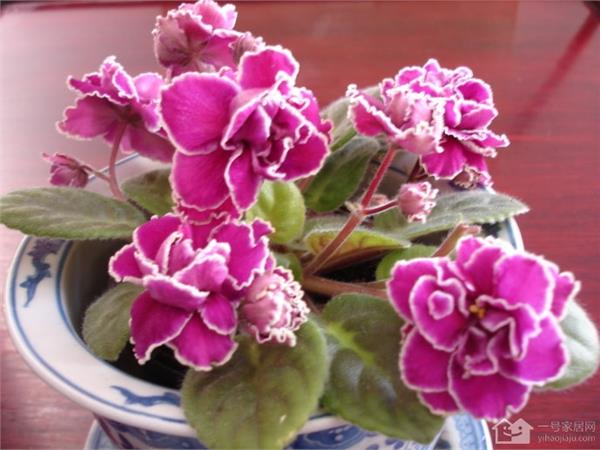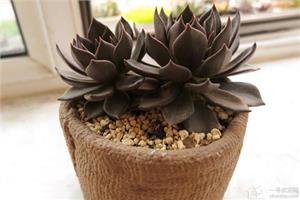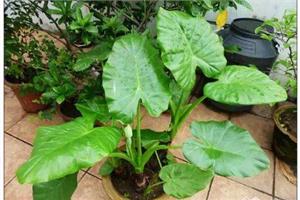Come and learn the essentials of cultivating African violets.
African Violet, also known as pansy, originally from Africa. It was discovered in 1892. In a short period of 90 years, it has been widely planted all over the world, and the variety has increased to more than 2,000. There is a province in Tankaiga called Ursala. The local mayor is Valuton. The Baron of S ã o Paulo, nurtured by his father from an early age, was interested in plants. Once in the woods far from Tanga, he found a dwarf herb growing in a humic soil wrapped in limestone cracks. This plant has a single blue flower with a beautiful shape. this is the African violet that was first discovered. Let's take a look at the knowledge of African violets.

Cultivation techniques of African Violet
1. Watering
The cultivation of African violets, watering is very important, low temperature in early spring, watering should not be too much, otherwise the stems and leaves are easy to rot, affecting flowering. Summer high temperature, dry, should be more watering, and spray water to increase air humidity, otherwise pedicel sagging, florescence shortened. However, when spraying water, the leaves spatter too much water, which will also cause the leaves to rot. In autumn and winter, when the temperature drops, watering should be reduced appropriately. African Violet is a semi-negative plant, which is most suitable for 8 hours of light every day. If there is not enough light in rainy and snowy days, artificial light should be added. Such as lack of light, elongation of petiole, delayed flowering and dim color. If the light is too strong in midsummer, it will burn or whiten the young leaves and need shade protection. It is required that the temperature at night is higher than that in the day, 24 ℃ at night and 16 ℃ in the day. The stems and leaves grow luxuriantly and the flowers are large and many. In the process of growth, the fertile and loose rotten leaf soil is the most ideal, fertilizing once every semimonthly, if the fertilizer is insufficient, the flowering decreases and the flowers become smaller. After blooming, the residual flowers should be picked at any time to prevent them from mildew and rot.
two。 Fertilizer application
Generally speaking, in the case of sufficient light source, only a little fertilizer can be added to maintain the normal growth of plants, and too much fertilization will cause growth obstacles; but in an environment with insufficient light sources, even if sufficient fertilizer is provided, plants will grow poorly or even die. Therefore, the general application of fertilizer should be carried out when the light source is carefree in order to show its effectiveness. As long as the light source is abundant, the environment is appropriate and the management is correct, only the base fertilizer or the fertility stored in the medium is mixed in the medium, even if no additional fertilizer is added during the growing period, it is enough to make the plant grow and blossom normally. However, if the plant growth potential and the quality of flowers are required, suitable fertilizers must be used according to different growth periods.
For African violets, the fertilizers and essentials required for different growth periods are as follows:
(1) rooting stage-such as reproduction, transplantation, basin change. Due to rootlessness or root injury, the absorption function is poor and the discomfort should be applied immediately after treatment. Fertilizer should be applied 2-4 weeks later. It is suitable for fertilizers with high content of nitrogen and potassium, such as fertilizers with the ratio of nitrogen, phosphorus and potassium 7-6-19, 14-12-14, etc.
(2) vegetative growth period-such as from seedling growth to pre-flowering and after anthesis. It is suitable for fertilizers with high nitrogen content, such as fertilizers with a nitrogen, phosphorus and potassium ratio of 30-10-10, 25-5-20, 5-1-1, etc.
(3) flowering-it is applied about 2 months before the expected flowering. It is suitable for fertilizers with high phosphorus content, such as fertilizers with a nitrogen, phosphorus and potassium ratio of 10-30-20, 15-30-15, 12-36-14, 0-10, etc.
3. Change the basin
Aged plants, new pots for seedlings, plants with diseased roots, salt deposits on the edge and outer wall of the basin, misshapen appearance, unattractive plants, etc., should be changed immediately. Plants under different conditions have their own suitable ways and essentials to change pots. Take healthy plants (small and medium seedlings) from small pots to larger pots and aging plants as an example, the order and essentials are as follows:
(1) the arrangement of the plant and the examination of the healthy state of the root-first, the smaller or poorly growing leaves at the bottom can be removed, and the root can be examined: if it is white, it is healthy; if brown or dark brown, it is unhealthy or even rotten. Unhealthy root tissue must use blades or scissors to remove about 1 beat 3 times 1 blade 2 medium. Generally, the more serious the browning degree, the more the proportion of media removal. On the other hand, healthy plants do not need to do any treatment on the roots, and try their best to avoid injuring the root tissue.
(2) when loading a new basin-when changing the plant from a small basin to a large basin, first put a little new medium into the bottom of the large basin to be changed, put the plant with medium into the large basin, and fill the gap with new medium.
(3) the treatment after changing the basin-fully watered and then cultivated in a place with suitable environment. After changing the pot, the plant is usually weak or the root is injured, and the root absorptive capacity is reduced. Fertilization should be avoided within 2 weeks after changing the pot, and it is best to choose the season with suitable environment and climate, so that the plant can recover smoothly. Generally, when changing the basin, the temperature should be kept between 18 and 26 ℃. In Taiwan, spring and autumn are more suitable, but if they are planted in an air-conditioned environment where the temperature can be maintained at about 25 ℃, pots can be changed in all seasons.
The above is the knowledge of African Violet. I hope I can help you.
Related
- Wuhan Hospital Iron Tree Blooming Result Was Instantly Frightened by the Gardener Master
- Which variety of camellia is the most fragrant and best? Which one do you like best?
- What is the small blue coat, the breeding methods and matters needing attention of the succulent plant
- Dormancy time and maintenance management of succulent plants during dormancy
- Minas succulent how to raise, Minas succulent plant pictures
- What are the varieties of winter succulent plants
- How to raise succulent plants in twelve rolls? let's take a look at some experience of breeding twelve rolls.
- Attention should be paid to water control for succulent plants during dormant period (winter and summer)
- Watering experience of twelve rolls of succulent plants
- Techniques for fertilizing succulent plants. An article will let you know how to fertilize succulent plants.



